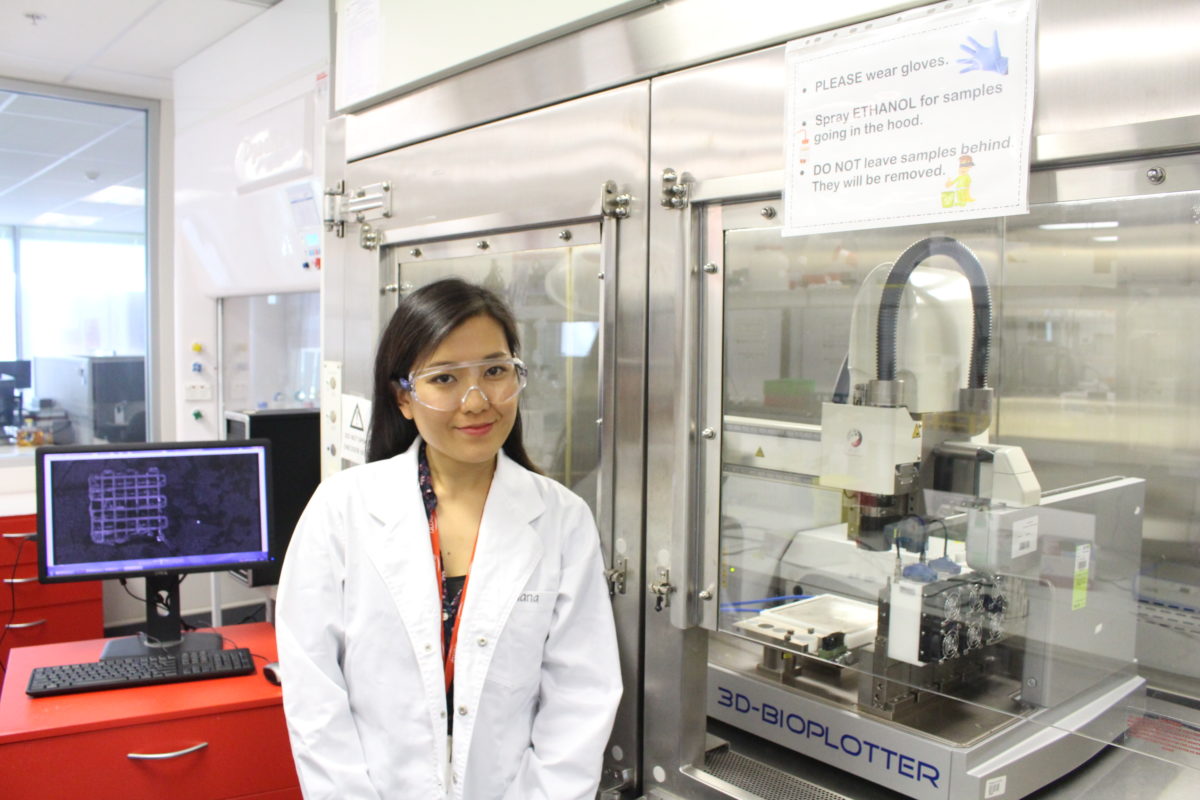News
3D printing bone tissue
Jun 28 2022
ACES researchers have captured the complexities of 3D bioprinting for tissue engineering and skin regeneration in a comprehensive review paper titled 3D Bioprinting Constructs to Facilitate Skin Regeneration for the Wiley journal, Advanced Functional Material.

Luciana Daikuara
3D bioprinting of skin has attracted significant attention in recent years as the role the technology could play in drug development and testing and in treating complex wounds and burn injuries becomes clearer.
“There’s a lot to be considered in the area of 3D bioprinting, such as bioink formulations, cell combinations, manufacturing methods and the selection of suitable materials,” PhD Candidate Luciana Yumiko Daikuara, the paper’s lead author, explained.
“Researchers in this area also need to be conscious of the emerging regulatory environment for 3D bioprinting and think about optimising the manufacturing process to ensure processes are scalable and cost-effective.”
As explained in the review paper, advances in skin bioprinting in recent years have been promising but there are still challenges to overcome.
“Skin is a multi-layered complex organ that serves multiple functions beyond protecting our internal organs – it regulates body temperature and has sensory functions. Each compartment contains a different cell population, cell density, composition, and host-specific appendages, blood vessels, and nerve endings, therefore the demand on the bioink is amplified,” Ms Daikuara said.
“To increase the complexity of bioprinted skin constructs, different bioinks containing different cell types, and tailored for each structural compartment are needed. For example, the fabrication of multilayered structures containing epidermal, dermal, and hypodermal compartments with vasculature, nerves, hair follicles, pigmentation, and other skin appendages would require the formulations of multiple bioinks functionalised with bioactive molecules to guide mechanobiology responses and tune cell behaviour of each structure compartment.”
The paper’s co-authors include ACES researchers Xifang Chen, a PhD candidate in Biofabrication, Dr Zhilian Yue and ACES Director Prof Gordon Wallace; A/Prof Danielle Skropeta, Deputy Director of Molecular Horizons at UOW; Prof Fiona Wood and A/Prof Mark Fear from the Burn Injury Research Unit at the University of Western Australia and the Fiona Wood Foundation.
“This is exactly the type of medical challenge that 3D bioprinting can contribute to,” Prof Wallace added.
“The ability to strategically arrange biomaterials and cell types in 3D will result in structures optimised to create skin on the bench and, importantly, to facilitate skin regeneration in vivo. The input of clinicians in plotting the best way forward to deliver outcomes for patients in the shortest possible time is critical.”
Work contributing to the paper has been supported by the ANFF – Materials Node and the Illawarra Health and Medical Research Institute (IHMRI) with which A/Prof Skropeta is affiliated.
Access the paper here.
You can also learn more about this research at next week’s Biofabrication 2021 Conference. Find more information on when the authors involved in the review will be presenting at the online event here.













